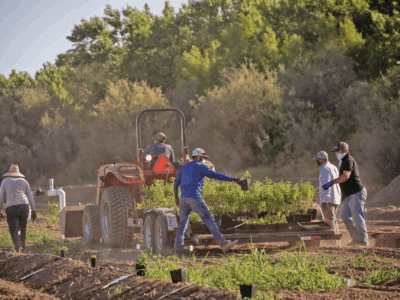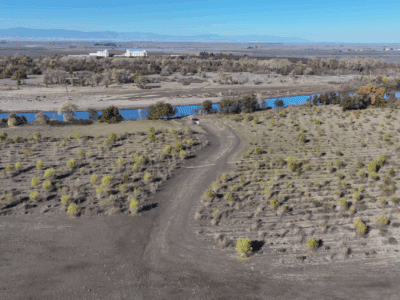The movement to restore native ecosystems is spreading like a slow-burning, beneficial wildfire. Reviving depleted landscapes can combat the threats of climate change and biodiversity loss.
“We can reverse habitat loss and give life back to local landscapes with each native seed and plant,” says Heritage Growers Operations Manager Michele Ranieri. “Everything depends on healthy ecosystems, from salmon and monarch butterflies to the air we breathe and water we drink.”
However, a pressing challenge has emerged: Demand for native seeds has surged, outpacing supply and creating a bottleneck for advancing on-the-ground restoration. In its January report, the National Academies of Sciences concluded the national supply of native seeds falls short of supporting current restoration efforts at a national scale.
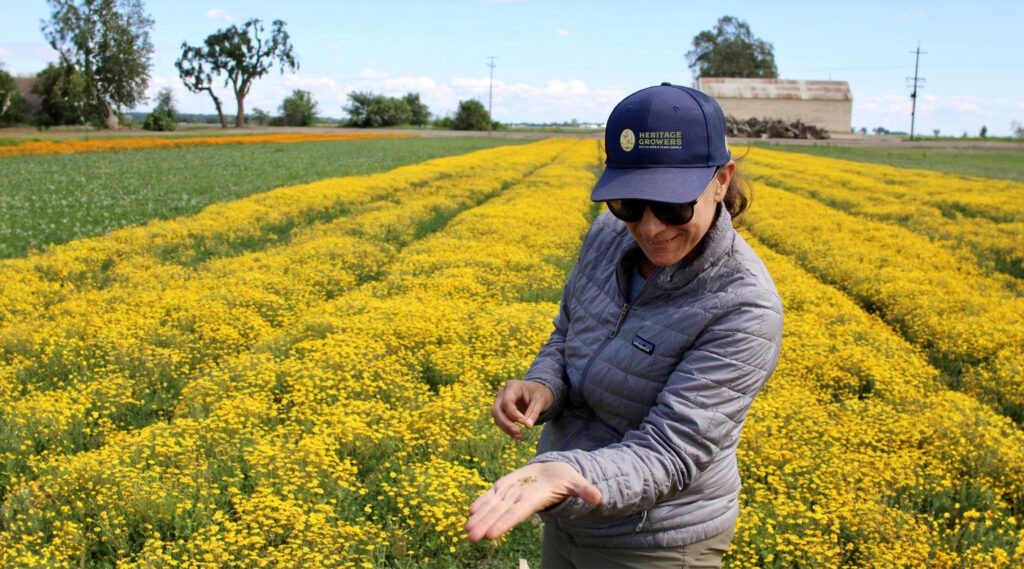
In fact, to reach California’s target of conserving 30% of the state by 2030, a staggering seven million acres must be preserved and restored—magnifying the urgency for native seeds. That’s a land area equivalent to roughly a quarter of all irrigated farmland in California!
“The need for a more robust supply of native seed to support habitat restoration has never been greater,” said Dina Robertson, Easy Bay Regional Parks District Wildland Vegetation Program Manager . “The production of these plant materials needs to be expanded substantially to allow for organizations such as ours to properly restore conservation lands.”
To overcome this major bottleneck, River Partners launched Heritage Growers Native Seed and Plant Supply in 2022. The seed farm, located near the farming community of Colusa in the Sacramento Valley, is growing rapidly.
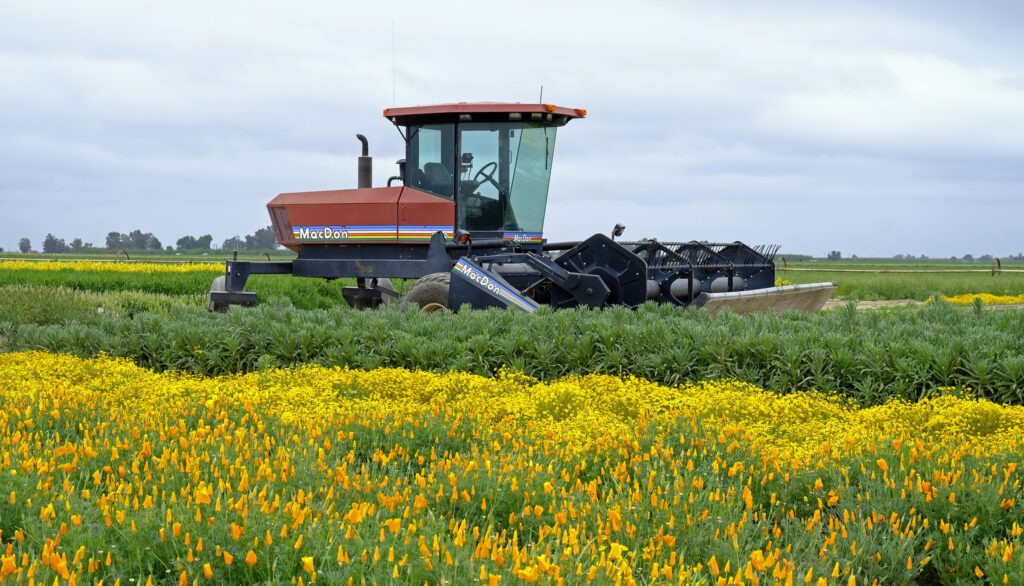
This year, Heritage Growers expanded from 12 to more than 150 acres, and offers an array of 90 native grasses and forbs. We also fabricated a seed cleaning mill designed specifically for processing California native seeds and welcomed three new team members, including a Wildland Seed Collections Manager, Haleigh Holgate.
“The mission for River Partners and Heritage Growers is to restore habitat for the benefit of people and the environment,” says Heritage Growers General Manger Pay Reynolds. “We’re restoring habitat at scale.”
To date, River Partners has restored over 18,000 acres of riverside habitat statewide, and we’re doubling our pace of restoration this decade.
Growing Seeds at Scale
Given the scale of California’s ambitious restoration goals, procuring ample native seeds and plants directly from the wild is infeasible because wildland seed collection is labor- and time-intensive. And, sometimes there simply aren’t enough wild seeds available. On the farm, we can take a handful of native seeds collected from the wild and turn them into hundreds of pounds of seeds.
“Without seed amplification, we can’t reach the capacity needed for these large-scale projects,” says Holgate. “Providing amplified seed collected responsibly from the region being restored is essential to scale.”
Take the Willits Bypass Mitigation Project led by the Mendocino Resource Conservation District for example. This project, funded by the California Department of Transportation, is the largest public wetlands mitigation project in California. Heritage Growers is working closely with project partners to provide seeds and plants for the restoration.
To collect the seed, Holgate scouts for appropriate wildland locations for seed harvest, working in coordination with local agencies and landowners to secure the appropriate permits and identify the plants.
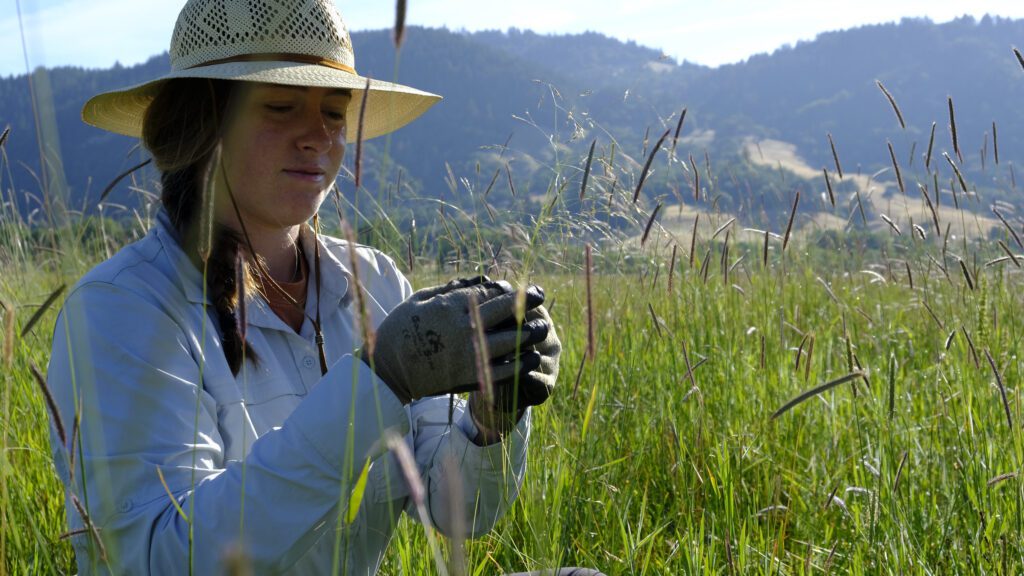
Then, she closely tracks each plant community to ensure she doesn’t miss the brief window when seed is ripe for collection—which can vary considerably based on microclimates and year-to-year shifts in seasonal weather patterns. For example, due to this year’s wet weather, many seeds bloomed a few weeks later than normal, delaying the window for seed harvesting.
Once wild seed is collected, it’s cleaned and tested to see how much of the seed is viable and will germinate. Depending on how many seeds are collected, and what the germination rate is, this process might need to be repeated to have enough seed to plant at the seed farm and grow out at scale.
“We can collect wildland stock seed—for example, let’s say we collect 10 pounds of seed from 10 different species—and we can turn it into 1,000 pounds of seed we can use for habitat restoration,” says Reynolds.
Klamath River Renewal
Heritage Growers is proud to partner with Resource Environmental Solutions (RES) and the Yurok Tribe to grow over 40,000 plants and amplify wild-collected seed for the Klamath River Renewal project, the largest dam removal project in world history.
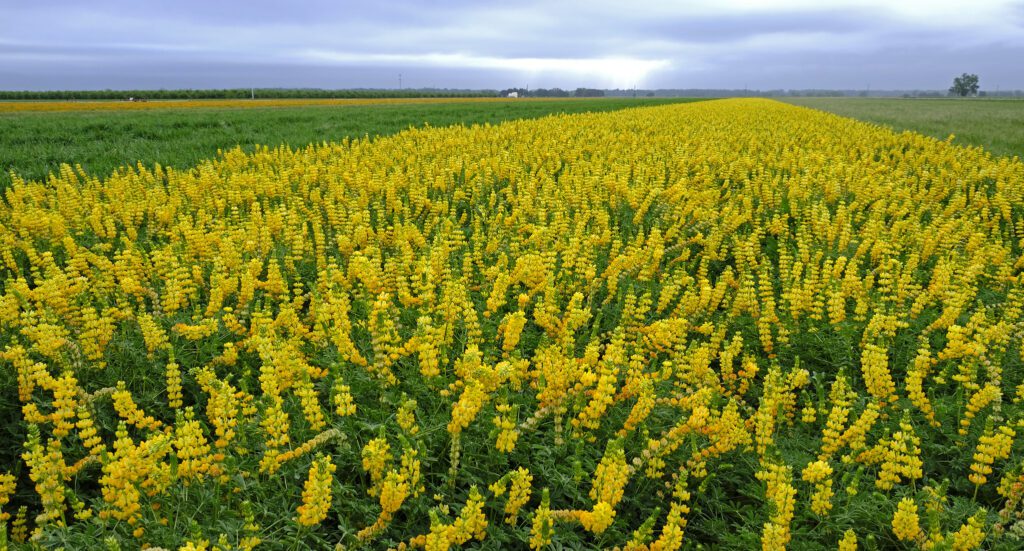
In March, the long-awaited dam removal officially began along the Klamath River near the California-Oregon border. Four aging dams will be removed by 2024, restoring 400 miles of habitat for endangered salmon.
Yet, dam removal is just the beginning. Once the approximately 500 feet of dams are removed, the river will be restored with native seeds and plants to help renew the river to its former health.
Revitalizing the 2,000 acres that had been underwater for decades is no small task. Project partners must quickly replant those areas to ensure invasive species don’t gain a foothold. Extensive pre-planning is necessary, which is why The Yurok Tribe started gathering native seeds from nearby locations five years ago.
The seeds collected from the wild were sent to seed farms that specialize in native seed propagation, including Heritage Growers, where they can grow a handful of seeds into large amounts.
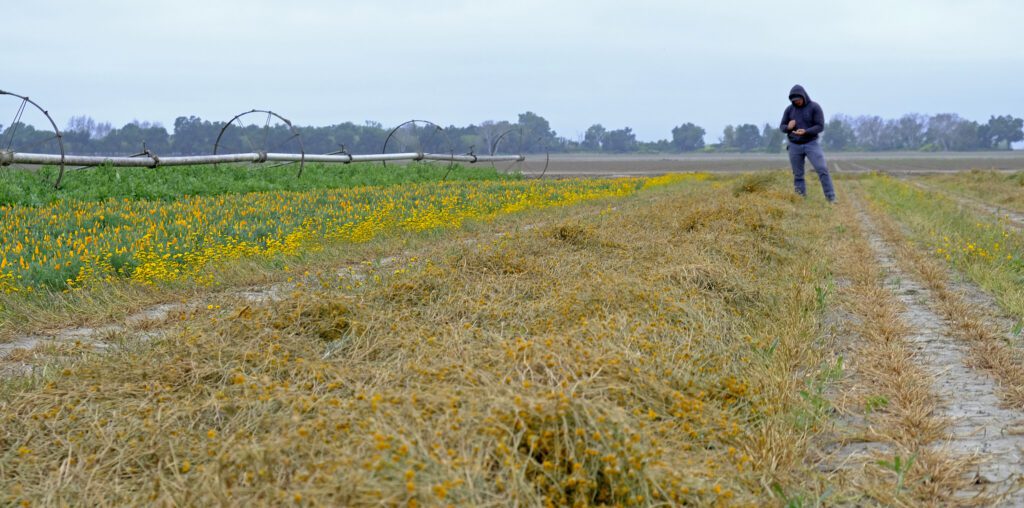
For example, last fall, Heritage Growers planted approximately 2 acres of yellow chick lupine (Lupinus microcarpus densiflorus). By summer this year, the plants were harvested and the seed will be planted in the footprint of drained Klamath Dam reservoir in the coming months.
We’re thrilled we can help restore the health of the Klamath River and the wildlife and people who depend on a healthy waterway for survival.
“There are unprecedented opportunities for conservation and restoration right now,” says Reynolds. “We need to meet the moment with restoration-appropriate native seeds.
Supplying Restoration with Native Seeds
To help broaden the public’s awareness about the critical importance of native seeds mitigation the effects of climate change and boosting biodiversity, The Society for Ecological Restoration is releasing a nine-part documentary series that explores the efforts to grow the native seed supply chain in the western United States.
View the trailer:



